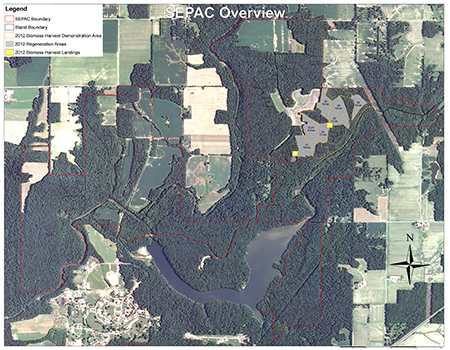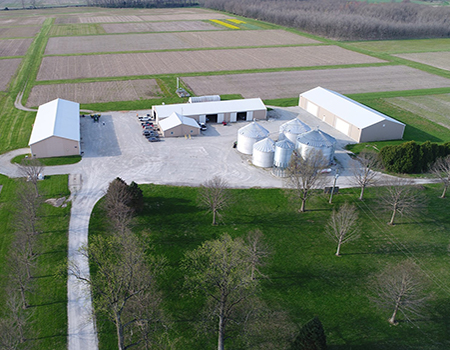Southeastern Indiana Purdue Ag Center (SEPAC)

The Southeastern Indiana Purdue Ag Center (SEPAC) is in the Bluegrass Natural Region in Jennings County, northeast of North Vernon. It contains a total of 2,500 acres, with 1,430 acres in forest.
SEPAC was established in 1977, when the state of Indiana transferred 830 acres from the Department of Mental Health’s Muscatatuck State School to Purdue University. In 2005, the Department of Natural Resources transferred an additional 1,600 acres to Purdue. The center is distinctive in its history of conservation tillage, including no-till.

Research
- SEPAC Stewardship Plan (pdf)
- Weed Control
- Growth and Yield
- Agroforestry
Purdue Agriculture Centers
More property details
- Largest of the PACs, with 2,430 acres located six miles east of North Vernon in Jennings County
- A timber base of approximately 1,600 acres
- A variety of soil types but primarily silt loam soils common in southeastern Indiana—hard to manage, poorly drained, low organic matter
- Highly erosive soils with no-till farming practices used on most of the cropland


Property Manager, Maps & More About Our Research
Don Carlson
Southeast-Purdue Agricultural Center (SEPAC)
4425 East 350 North
Butlerville, IN 47223
Cell: 812-798-2764
Email: carlsode@purdue.edu
View our nine research areas along with our world-class faculty, Research Areas.
Purdue centers seek to support and enhance the research and partnership enterprise at Purdue University. The centers are valued and encouraged at Purdue as they create a venue for faculty to come together to pursue common goals. Forestry and Natural Resources have faculty and staff involved in six centers here at the University.
The Department of Forestry and Natural Resources maintains an impressive collection of state-of-the-art research and education facilities. These labs, green houses, and educational facilities are a fundamental component that enables our faculty and students to learn, make new discoveries, and engage our clients in using these discoveries to sustain our nation’s ecosystems and natural resources.